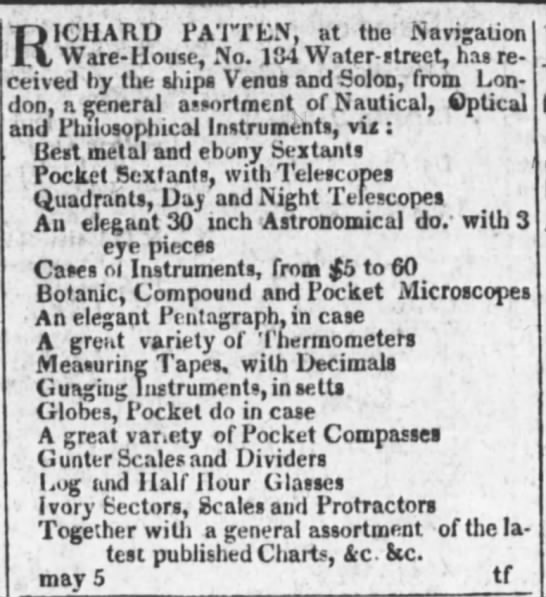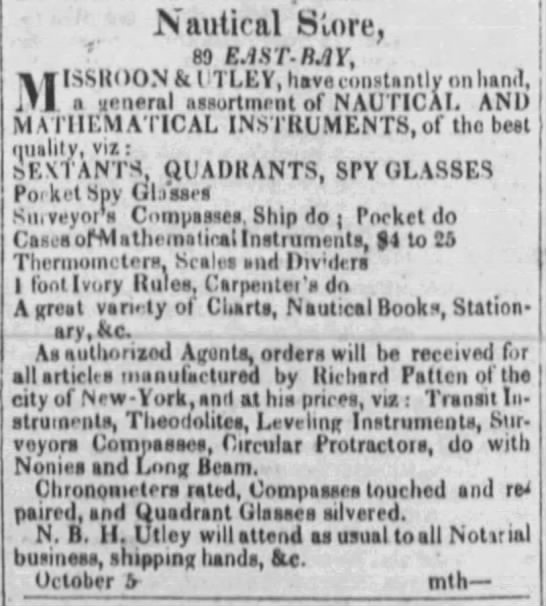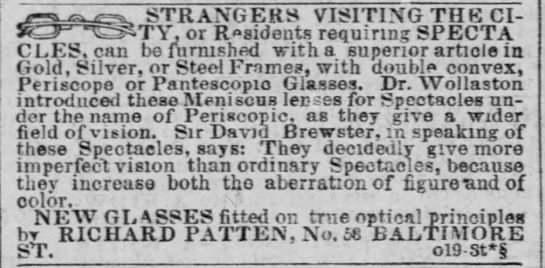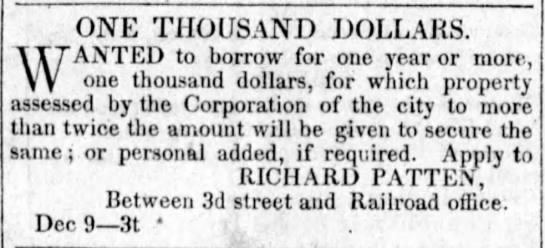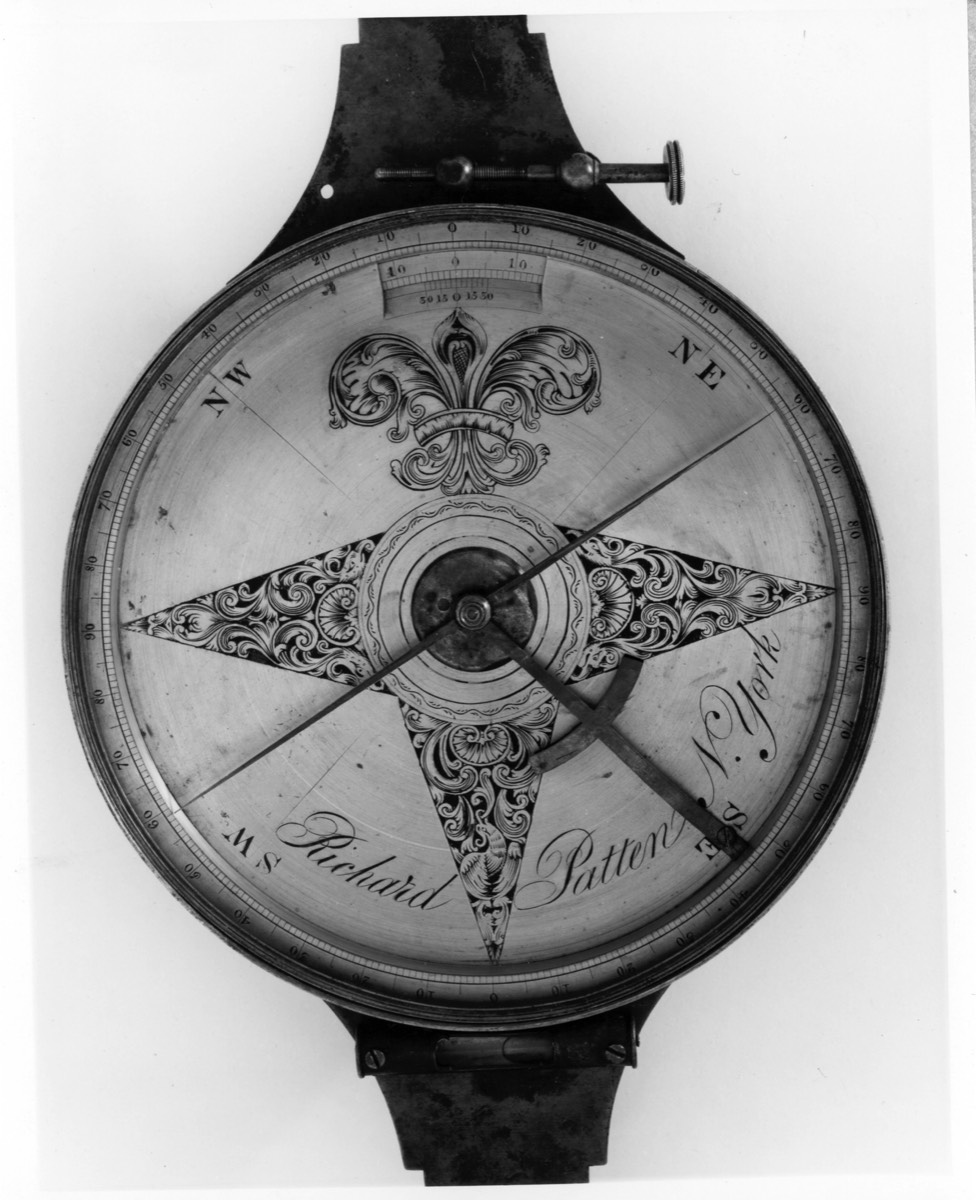
Richard Patten
History
Richard Patten
(1792-1865)
Among the most prominent makers of surveying instruments in the first half of the Nineteenth Century was Richard Patten, who worked at various times in New York City; Washington, D.C.; and Baltimore, Maryland. He was born August 5, 1792, probably in Maryland, but no records of his early life or training have survived.
Patten's name first appeared in Longworth's Directory for New York City in 1813 as a maker of mathematical instruments with a shop at 350 Water Street. He moved to a new location at 184 Water Street during the next two years. By 1820 he had moved 180 Water Street, where he remained during the rest of the time he worked in New York City. From 1835 to 1840 he was listed at various locations but without any indication of his profession.
Edmund Brown and Harvey W. Hunt took over Patten’s shop in the mid-1830s, boasting that while working for Patten they had been "principally employed at making the best instruments, such as Theodolites, Levels, Railroad Graders, Surveyor’s Compasses, Circular Protractors, and in fact all Instruments in the Engineering and Surveying departments." They relocated their business to Baltimore, MD from 1833 to 1842.
Patten moved to Washington. D.C. in 1841, took his son George into partnership and was first listed in 1842 in the Washington business directory section of The Business Directory and Baltimore Almanac as “R. Patten & Son," with a house at 119 Mercer Street. He continued to be listed through 1846. The Pattens moved to Baltimore around 1853, George died in 1857 after which Richard continued in business by himself; he returned to Washington where he was listed in the directories from 1862 to 1865, the year of his death.
One of his trade labels claimed that he was the "only Manufacturer of Sextants and Quadrants in New York" and that "All instruments in the above line made to order & Warranted being divided on an Engine after the plan of Ramsdens." The statement implied that he owned and used a dividing engine. However, he imported and sold instruments made by British makers such as Spencer, Browning & Rust of London and probably others.
In 1822 Patten became involved in a legal battle between two competitive New York instrument makers, Edmund March Blunt and Isaac Greenwood. Blunt was a native of New Hampshire, and early in the Nineteenth Century established himself in Newburyport, Massachusetts as a book dealer, printer of sermons and stationery, and proprietor of a circulating library. He began to publish navigational books and charts, and developed a lucrative business.
In l811 he moved to New York City, where he opened his '"Nautical Book Store, Sign of the Quadrant" near the waterfront at 202 Water Street, at the corner of Beekman Slip. There was no international copyright convention at that time, and he began to pirate English navigational publications and charts. He also produced his own books on various subjects, including travel guides. Following his success with the small charts in his Coast Pilots, Blunt began to engrave and publish his own charts, which were in great demand.
One of Blunt's major competitors was Isaac Greenwood III, of New York City. Descended from a prominent New England family and the son of a maker of mathematical instruments, Greenwood was born in Boston in 1758 and made and sold instruments in New York from 1783 to 1787. He then moved to Providence, Rhode Island. In about 1810 he returned to New York to take over the business of his recently deceased brother; Clarke also an instrument maker.
He continued in business until 1819, and died in 1829. Edmund Brown and Harvey W. Hunt took over Patten’s shop in the mid-1830s, boasting that while working for Patten they had been "principally employed at making the best instruments, such as Theodolites, Levels, Railroad Graders, Surveyor’s Compasses, Circular Protractors, and in fact all Instruments in the Engineering and Surveying departments."
In addition to navigational and surveying instruments of his own manufacture, Patten also imported and sold British instruments and navigational charts. Concerned that his rival had become so successful, and in an effort to increase his own trade, he claimed in his advertising that the British charts he sold were greatly superior "to any copy of those charts printed in America," and charged that Blunt had copied English publications. On one occasion he wrote to a shipmaster, a Captain Steinhauer, that Blunt's charts were unauthorized copies of English charts and that furthermore they were inaccurate. Steinhauer showed the letter to Blunt, who thereupon sued Greenwood for libel. The case was tried before a special jury of shipping merchants in the Court of Common Pleas in December 1822, and Patten appeared as a witness for Greenwood.
After Patten had presented his evidence in support of Greenwood, Erasmus A, Kutz, a prominent New York instrument maker, was called to testify on Blunt's behalf. He testified that "the defendent (Greenwood) said to Mr. Patten, it is damned strange if we cannot fix him (Blunt) between us." As a consequence, Patten's evidence collapsed. Although Greenwood claimed that Blunt's reputation had not been damaged by the libel, the jury found for Blunt and the court awarded him $750 and costs.
Six years later Blunt had his revenge on Patten for having testified against him. In 1821 Blunt had personally surveyed Nantucket and the Georges shoals, establishing the position of the Nantucket South Shoal to be 38 minutes north of the position in which it appeared on existing charts, giving an extra 22 miles to the channel used by ships sailing between Europe and American ports. This new information made it possible for ships to gain as much as 24 hours on the passage to Europe. Blunt immediately engraved a new chart, which he copyrighted, produced and sold.
Patten also engraved and printed maps and nautical charts. In his chart of New England waters published in 1827, he included the shoal in the same position and with the same detail as had appeared on Blunt's copyrighted chart. Blunt promptly sued for copyright violation. The case was heard before the Circuit Court of the United States in 1828. Although Patten and his witnesses held that the information was in public domain, a number of shipmasters affirmed that they always credited Blunt with the discovery, and the jury brought in a verdict for prosecution.
This decision was of considerable importance, because prior to this time, sailing directions and similar nautical information had always been considered public domain. Blunt himself had followed this practice in his nautical publications and charts, but by insistence on copyright infringement, he established a dangerous precedent, However, there are no records of its later use.
During the years that he lived and worked in Washington and Baltimore, Patten was employed by the Coast Survey. He may have made some instruments for the Coast Survey, and there is record that in 1843 he repaired some 'of the instruments of Ferdinand Rudolph Hassler, the Survey's first superintendent.
National Museum of American History:
Vernier Compass
Theodolite
Catalogues
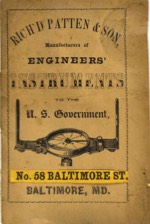
Richard Patten - New York:
Patten Catalogue
Labels
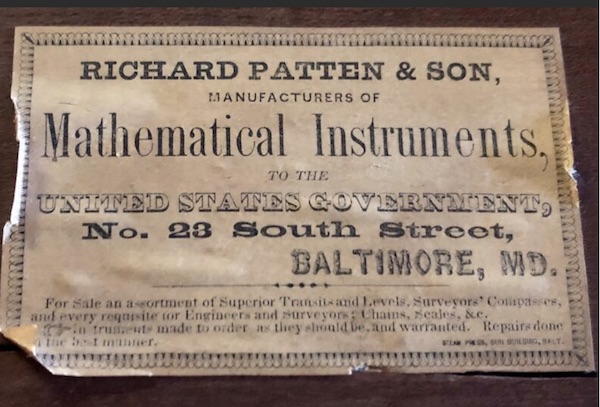
Additional Pictures
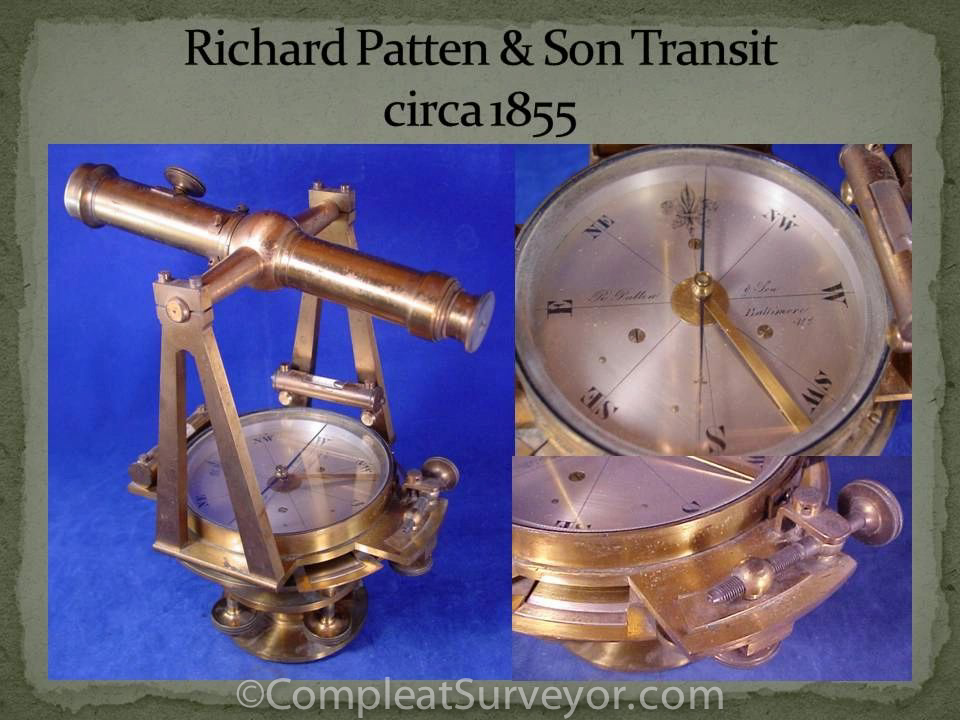
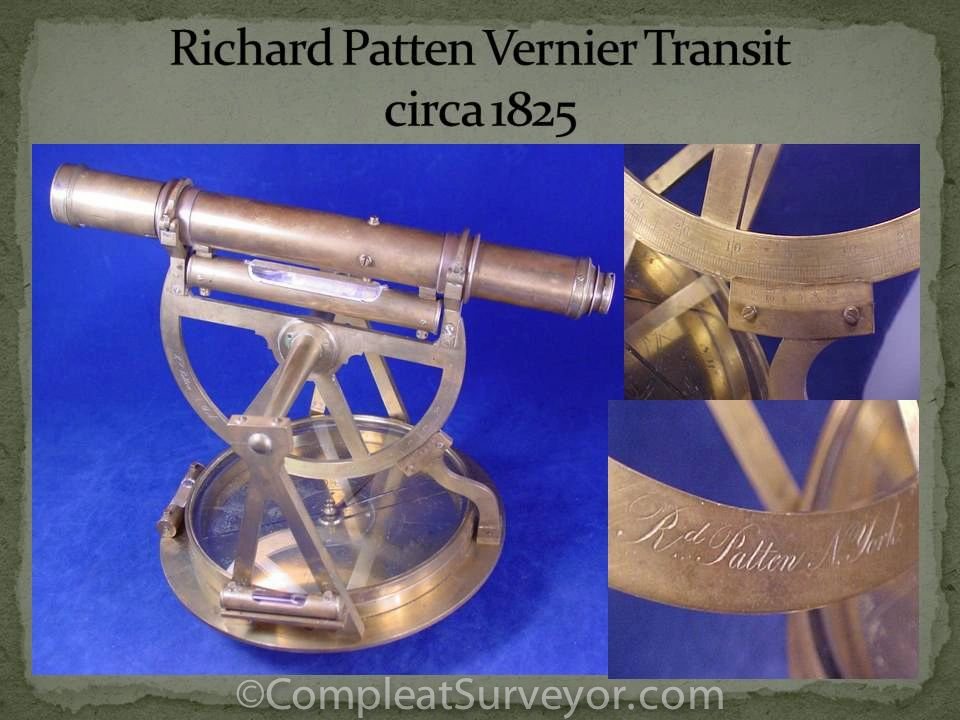
© 2020 Russ Uzes/Contact Me
